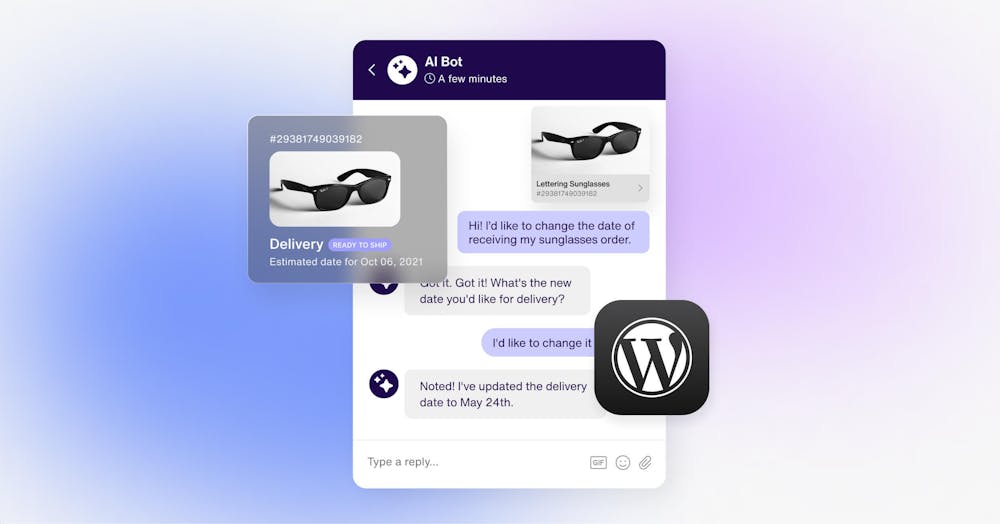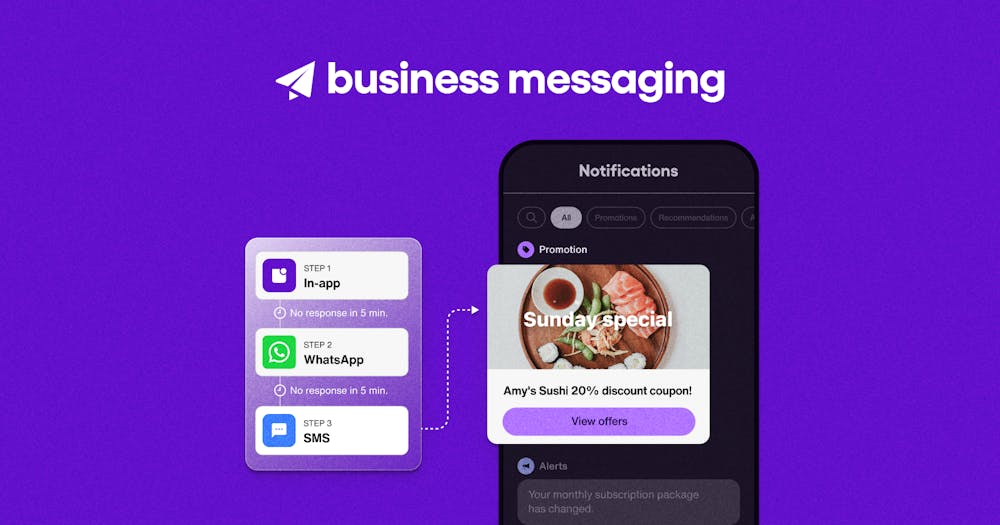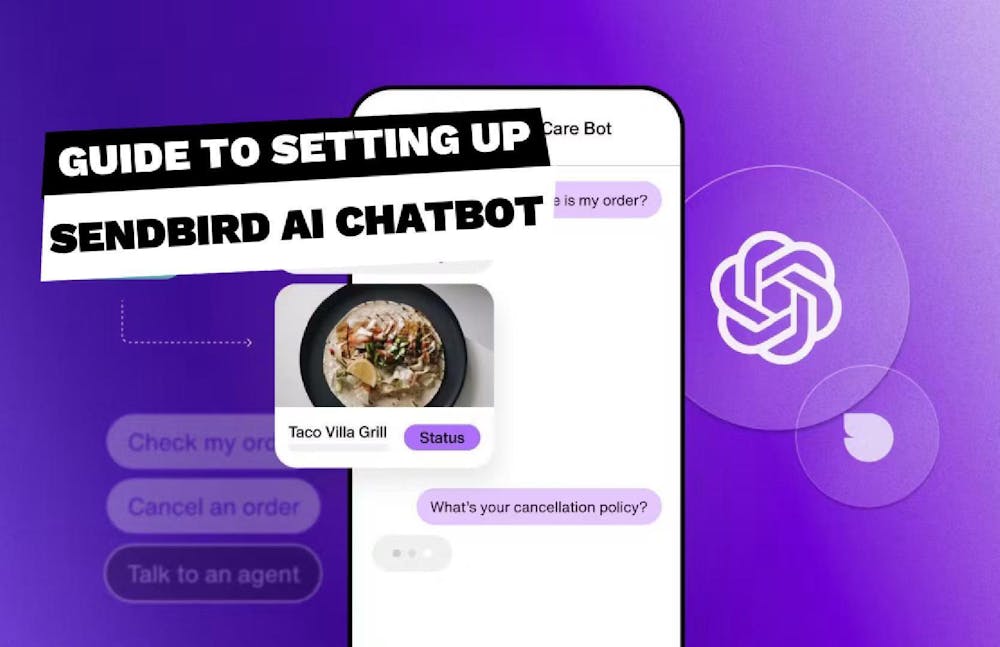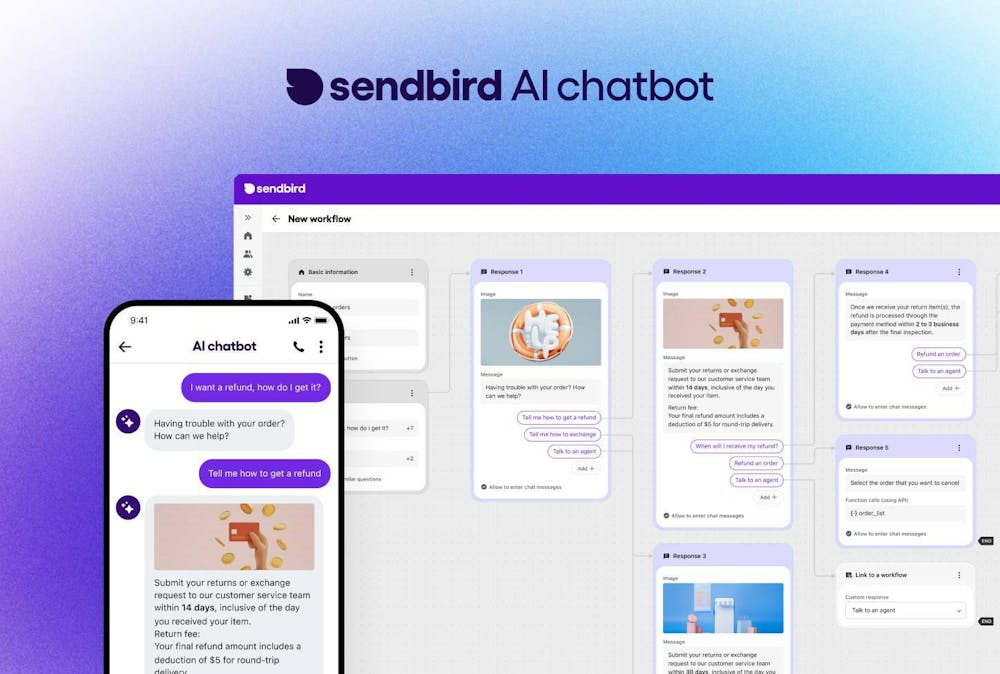Generative AI in action: Sendbird introduces a new chatbot demo powered by ChatGPT
A new ChatGPT-powered chatbot demo
Today, we are thrilled to launch the first Sendbird Chat demo using generative AI. Powered by OpenAI's ChatGPT, a revolutionary technology that has taken the world by storm, this demo showcases just how powerful generative AI can be for your business. Generative AI takes chatbot interactions to a different level, with personalized and intelligent responses that were the sole forté of humans - until now.
Generative AI is a technological leap in the world of artificial intelligence. It opens up a world of new possibilities for businesses already invested in chat to enhance engagement, retention, and overall customer satisfaction.
Here's an overview of how ChatGPT-powered chatbots can be incredibly useful to increase user engagement and ultimately drive customer loyalty.
ChatGPT: The best generative AI
ChatGPT stands for "Chat Generative Pre-trained Transformer". It is a type of natural language processing (NLP) model that is pre-trained on a large corpus of text data and is designed to generate (as opposed to retrieve from a predetermined list) humanlike responses to text-based prompts. The GPT architecture uses a transformer-based neural network that is trained on a massive amount of text data to generate high-quality, context-aware responses. This technology underlying ChatGPT is so powerful that it reached 1 million users in just 5 days!
Rule-based chatbots vs. AI chatbots vs. generative AI chatbots: What’s the difference?
Chatbots have revolutionized the way businesses interact with customers. They respond instantly to customer queries, help businesses reduce operational costs, and improve customer satisfaction. However, chatbots’ underlying technologies vary and are constantly evolving. Here are 3 distinctive technologies that have differing levels of complexity and performance.
Rule-based chatbots
These are known as decision-tree, script-based, or menu-based chatbots, and offer a prescriptive user experience that leaves no room for flexibility. They require few resources and can drive high customer satisfaction in situations like customer routing or getting answers to product pricing, features, and availability.
AI-based chatbots
This type of conversational AI powered by engines like Dialogflow is more evolved and a better choice in situations where there is a need for natural language understanding (NLU). Dialogflow can handle more complex and open-ended user interactions. Such AI chatbots are trained for specific use cases. Let’s take the example of a travel agency. An AI chatbot will effectively handle a request such as:
"Can you find me a flight to Los Angeles leaving on Friday and returning on Monday, with a layover in Chicago, and a hotel reservation for those nights as well?"
Because these chatbots are trained on smaller datasets, they are limited in flexibility and can’t effectively perform actions beyond the scope they’ve been trained for.
Generative conversational AI
Generative AI – the category ChatGPT falls into – is a game changer as it is much more adaptive. So how does this conversational AI work? Power-hungry and trained on a vast amount of data, ChatGPT is a generative AI language model that has the ability to generate natural-sounding responses on a wide range of topics. For example, consider a mental health chatbot designed to provide emotional support and counseling to a patient struggling with anxiety or depression. A generative AI chatbot will be able to offer responses that sound natural and empathetic. And the same conversational AI can interact with humans on any topic. A super app could use the same conversational chatbot to provide financial assistance, book a doctor's appointment, and take a food order for a delivery service.
With generative AI chatbots, life is about to get a lot easier, and customer satisfaction for online services taking advantage of the new technology is poised for a boost.
Let’s now talk about an important element of AI interaction: prompts!
What are generative AI prompts, and why do they matter?
Generative AI prompts are text or other inputs that are used to prompt an artificial intelligence model to generate new content, such as text, images, or music.
These prompts provide a starting point for the AI model, which then uses machine learning algorithms to create new content based on the patterns and trends it has learned from analyzing large amounts of data.
Generative conversational AI prompts are an important tool for unlocking the potential of artificial intelligence. They allow users to create new and innovative content that may not have been possible before. For example, conversational AI prompts can be used to generate unique pieces of music or art that are unlike anything that has been created! For online businesses, prompts are critical to personalize content and the customer experience.
The best chatbot experiences will likely rely heavily on the quality of these prompts and the local corpus of data companies harvest from their interactions with customers.
The future of conversational AI, in-app chat, and chatbot APIs
In conclusion, the future of chatbots is looking bright, as evidenced by the rapid advancement of technology with the recent launch of ChatGPT-4 just a few months after ChatGPT-3. At Sendbird, we remain committed to making complex technology, such as real-time communication, easy to operate for users and simple to integrate for developers with high-quality and highly-abstracted APIs. As part of this effort, Sendbird plans to become middleware for chatbot technologies, enabling online businesses to embed chat and valuable bots across a wide range of verticals, including marketplaces, healthcare, financial services, on-demand, education, and more.
Head to the Sendbird dashboard to enable new ChatGPT-powered bots. If you don’t have Sendbird Chat, build a quick proof-of-concept chat app with our 30-day free trial and turn on the ChatGPT chatter in just a few minutes.
Meanwhile, enjoy testing our new ChatGPT conversational AI demo!













